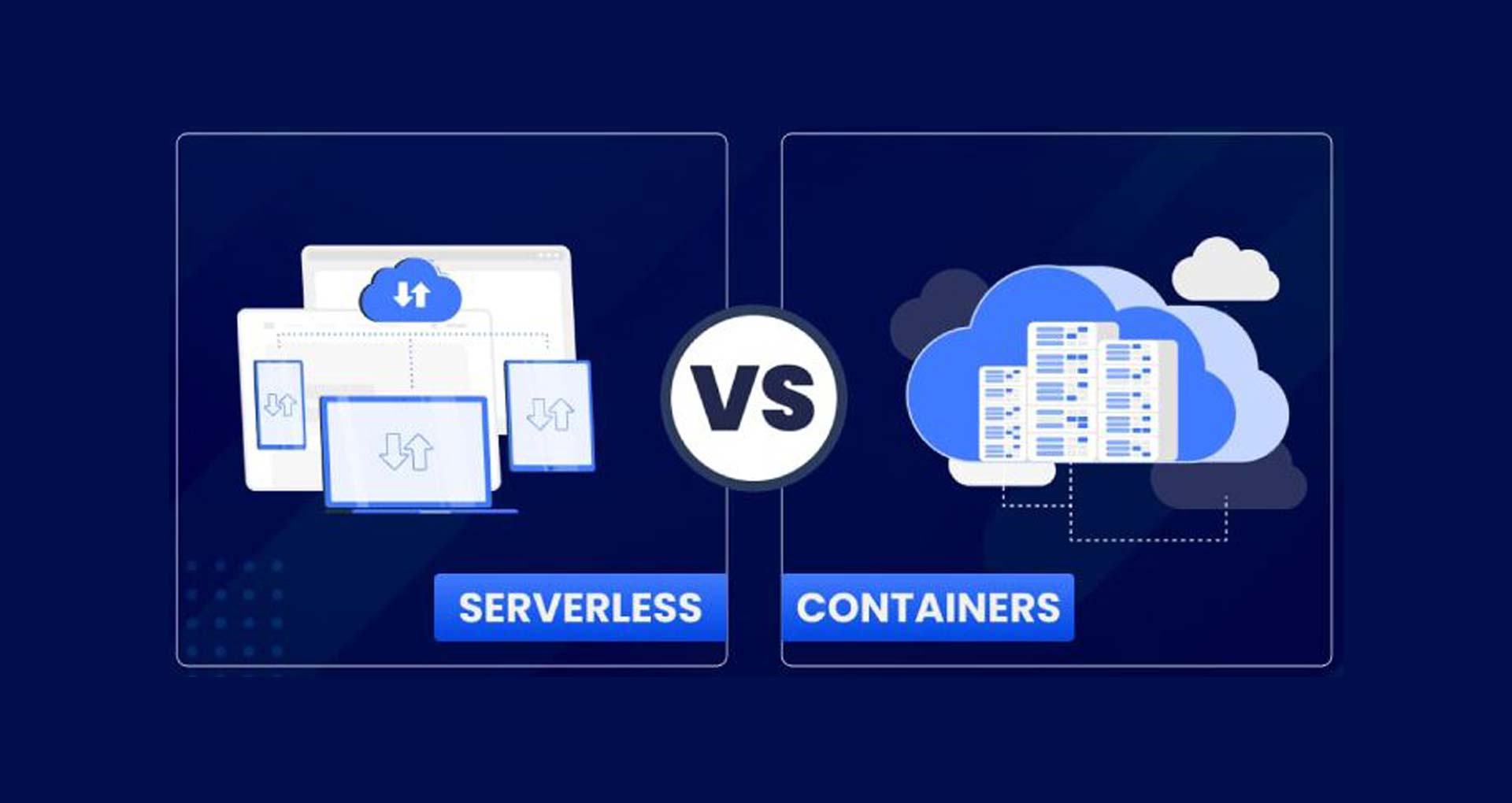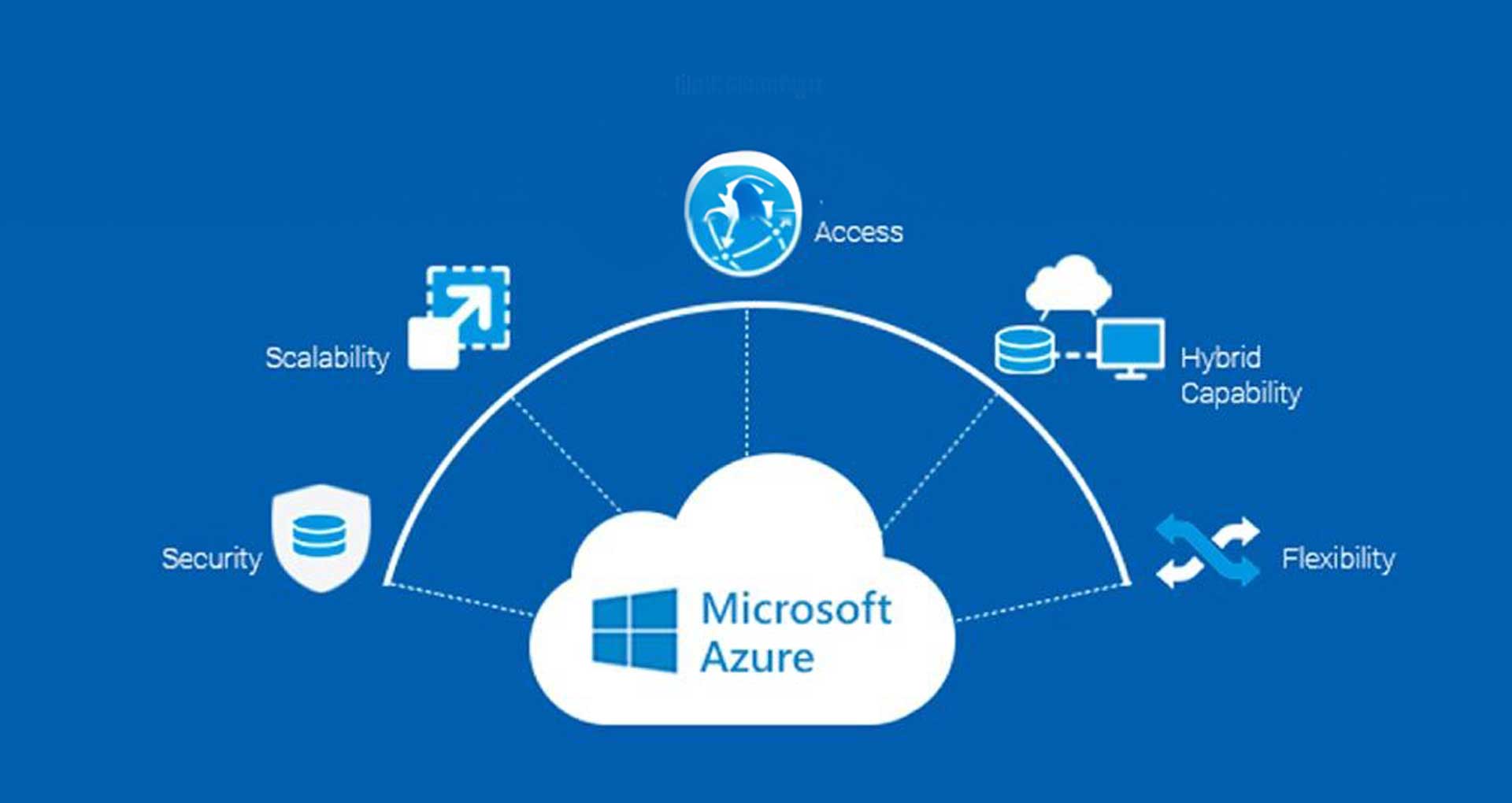The ever-evolving landscape of cloud application development trends, containers and serverless computing continue to stir intense debates and discussions. Some view serverless as a potential alternative to containers, while others picture serverless as a complementary component within containerized application deployments. This dilemma extends beyond mere performance considerations, emphasizing longevity limitations, app scalability, and deployment dynamics. The choice between containers vs serverless remains a widely contested topic. Will serverless computing replace containers? Or can it smoothly coexist within containers?
To help you hit the ground running on these hottest technologies, we’ve done all the legwork and laid it on the line. This blog post will help you understand the difference between serverless and containers. It gives you a brief overview of serverless vs containers pros and cons and guides you on when choosing one over the other makes sense.
What is Serverless Computing?
Serverless computing is an execution architecture that allows your app code to run on-demand without the hassles of provisioning and managing infrastructure. You pay only for the resources used, resulting in significant cost savings compared to traditional server setups. With serverless, you eliminate issues like scaling, security updates, and resource management, reducing time-to-market and costs. By leveraging cloud platforms like AWS, Azure, or Google Cloud and dynamic resource allocation, your code executes efficiently, making it a smart choice for modern applications. Explore more with this comprehensive guide on serverless computing.
Pros of Serverless Computing
Serverless computing offers numerous benefits that make it an attractive option for businesses of all sizes. By leveraging serverless models, companies can enjoy the following benefits:
- Cost Efficiency: With serverless, you pay only for the time and resources your code consumes. This ‘pay-as-you-go’ model means you’re not stuck with fixed server costs, significantly reducing expenses.
- Automated Scalability: Serverless systems automatically scale based on app traffic. This dynamic provisioning ensures your application can handle fluctuations in demand without manual intervention.
- Accelerated Development: You can deploy code quickly without dealing with server configuration. This agility accelerates the development cycle and shortens time-to-market, a crucial advantage in today’s fast-paced tech landscape.
- Minimal Maintenance: Serverless architectures relieve you of server management responsibilities. Vendors handle server upkeep, freeing up your developers to focus on creating and expanding applications.
- No Idle Costs: Traditional architectures require you to pay for server capacity, whether it’s utilized or not. In contrast, serverless charges you only for the server space you actually use, eliminating idle cost concerns.
- Inherent Scalability: Serverless applications inherently scale as your user base or usage grows. Functions are spun up and down as needed, ensuring your app can handle surges in demand without overwhelming your resources.
- Rapid Deployment: A serverless system allows for quick code deployment. Thanks to the modular nature of serverless applications, you can upload code in small increments or all at once.
- Effortless Updates: Updating or patching applications is simplified in a serverless infrastructure. It allows you to make changes in function, one at a time to avoid the need for through modification in the application.
- Reduced Latency: Serverless computing enables code execution closer to the end user. This localization decreases latency, as requests no longer need to travel long distances to reach the origin servers. This is particularly beneficial for applications that prioritize low-latency interactions.
Cons of Serverless Computing
While serverless computing offers compelling benefits, it is not without challenges. Consider the following disadvantages of serverless computing in your decision-making process to ensure the right fit for your application needs:
- Testing and Debugging Complexity: Testing and debugging can become more intricate within a serverless environment. Replicating the precise serverless conditions for testing can be demanding. Debugging becomes complex due to limited visibility into backend processes and the application’s segmentation into smaller functions.
- Security Concerns: Entrusting the entire backend to a vendor can raise security concerns, particularly for applications handling sensitive data. Sharing server resources among multiple customers, known as ‘multitenancy,’ can pose security risks if not correctly configured, increasing the risk of data exposure.
- Long-Running Processes: Serverless architectures aren’t designed for applications with extended processes. Since serverless providers charge for the app running in infrastructure, it costs much more than traditional setups.
- Vendor Lock-In Risk: Embracing a serverless architecture with a single vendor increases dependency on their services. This can complicate migration to another provider due to varying features and workflows.
What is Containerization?
Containers encapsulate applications and all related components, making them highly portable and self-contained for modern computing. Each container can hold a database, application server, or web server, all running independently. They allow you to bundle your application and its dependencies into one package, ensuring consistent performance across different environments. This flexibility empowers DevOps teams to work on specific parts of complex applications, accelerating development, deployment, and testing.
Pros of Containerization
Containers have gained immense popularity in product engineering due to their ability to streamline application installation and management. Here are some key benefits of containerization.
- Consistency: Containers provide a consistent runtime environment, ensuring code behaves similarly on diverse systems supporting the container runtime.
- Resource Efficiency: Containers share host system resources efficiently, enabling multiple containers to run on the same hardware without resource bottlenecks. This cost-effectiveness enhances resource utilization.
- Vendor Agnostic Containers: Containers aren’t tied to any specific cloud platform. This independence allows you to run containers seamlessly across various cloud providers or on-premises environments, enhancing flexibility and avoiding vendor lock-in.
- DevOps Control: Containers offer DevOps teams complete control over application packages. This control extends to managing dependencies, versioning, and configurations, facilitating efficient development and deployment processes.
- Enhanced Portability: Containers provide superior portability, enabling applications to run consistently across diverse hardware platforms and operating systems. This uniformity simplifies migration and ensures consistent performance regardless of the underlying infrastructure.
- Scalability and Security: Containers grant precise control over resource scaling and security policies. DevOps teams can easily scale containerized applications up or down based on demand while implementing granular security measures tailored to specific application needs.
- Efficient Patching: Containers facilitate faster patching and updates. Since each container encapsulates a specific component or application, patching can be done at a granular level without affecting the entire system, resulting in more efficient maintenance and enhanced system reliability.
This read would help you explore the essentials of containerization and how it can make the deployment of applications faster and more effective.
Cons of Containerization
Businesses cannot overlook the disadvantages of containerization when planning to implement operating system-level virtualization. By understanding these drawbacks, you can make an informed decision about whether or not containerization is the right choice for your specific needs and requirements.
- Security: Containers share the host kernel, potentially posing a security risk if one container is compromised. However, container-specific security measures, like isolation and network segmentation, can mitigate this concern.
- Complexity: Managing containers, especially in large-scale setups, can be complex. Container orchestration tools like Kubernetes simplify the process but can introduce their own complexity.
- Storage: Containers are typically stateless, which complicates the management of persistent data, such as databases. Solutions like persistent volumes can address this challenge.
- Networking: Container networking, especially across multiple hosts or environments, can be intricate. Careful planning and management are required to ensure seamless communication between containers and external services.
- Compatibility: Containers are tailored for specific container runtimes, potentially causing compatibility issues when using different runtimes. Tools like container conversion can help bridge this gap by converting containers between formats.
Both containers and serverless computing enhance workloads while enabling businesses to extract optimum value across users. So why not converge them and get the best of both? The future lies in embracing their dual power to outpace competitors!
Similarities Between Serverless and Containers
While these two cloud computing execution models are different from each other, they have some aspects in common.
Both allow development teams to:
- Deploy app code consistently at all times
- Save the cost and avoid the complexity of VMs
- Automate & dynamically scale workloads
- Abstract apps from the latent host environment
- Build more efficient and scalable apps than VMs.
- Develop and deploy code on the cloud without setting up or maintaining a server.
- Achieve full abstraction of the underlying infrastructure.
- Cater to small, independent tasks with rapid deployment capabilities, API integration for external resources, absence of built-in persistent storage, and support for building immutable infrastructure.
Now let’s do a feature-by-feature comparison of serverless architecture vs containers to guide you towards an optimal choice for your business needs:
Differences Between Serverless and Containers
| Serverless | Containers | |
| Availability | Typically runs for a short duration & shuts down as soon as the processing of current data or event is complete. | It is designed to run for a prolonged duration. |
| Deployability | Functions are relatively smaller, do not come bundled with system dependencies, and only take milliseconds to deploy. These applications go live as instantly as the code is uploaded. | Containers take relatively longer to set up initially because configuring system settings and libraries takes time. Once configured, they only take only a few seconds to deploy |
| Scalability | The backend of an application inherently & automatically adapts to meet the desired demands. | Requires planning to scale up by procuring the server capacity to run the containers. |
| Host Environment | Are tied to host platforms – based in the cloud | It runs on specific Windows versions & the latest Linux servers. |
| Cost | Eliminates the unnecessary expense incurred on resources as you’re only charged for the server capacity that your application uses. | Containers are constantly running, and cloud providers charge for the server space even if the application is not in use at that time. |
| Maintenance | It is much easier to maintain since the serverless vendor takes care of software management and updates. | The developer’s job is to manage and update each container before deployment. |
| Testing | Serverless platforms offer limited control over testing as the backend environment is hard to replicate on a local environment. | Containers provide more flexibility for testing as they can be easily replicated and deployed in different environments. |
| Processing | Serverless functions are ideal for executing small, independent tasks triggered by events. | Containers, however, are better suited for long-running processes that require continuous execution. |
| Portability and Migration | Serverless architectures are designed to be easily deployed and scaled without much effort. | Due to their underlying infrastructure requirements, containers require more effort for deployment and scaling. |
| Statefulness | Serverless functions are typically stateless by design. | Containers can be either stateful or stateless, depending on the specific design and configuration. |
| Latency | Serverless functions may experience cold start latency when triggered for the first time after being idle. | Containers generally have lower latency compared to serverless due to their continuous execution nature. |
| Security | Serverless functions rely on the cloud provider’s security measures but may have limited configuration options at the application level. | Containers allow fine-grained control over security measures such as network policies and access controls within the containerized environment. |
Serverless computing works better for certain use cases, while containerization is more suitable for others. Let’s explore some practical use cases of serverless vs containers for different business needs to help you determine which execution model best suits your next cloud-native project.
Containers vs Serverless: Use Cases
Now that we’ve delved into the distinct characteristics of each deployment option, let’s explore some practical scenarios where companies leverage containerization.
When to Use Containers

Microservices
Containers empower the creation of microservices and distributed systems, enabling seamless isolation, deployment, and scaling of intricate applications through modular container building blocks.
IoT Devices
Containers are an ideal solution for installing and updating applications on IoT devices. They encapsulate all necessary software, ensuring portability and efficiency, a valuable feature for devices with limited resources.
Containers as a Service (CaaS)
CaaS offers container-based virtualization, distributing container engines, orchestration, and computing resources as cloud services. Thanks to CI/CD pipeline automation, this streamlines development and accelerates application deployment.
Server Consolidation
Containers boast a smaller resource footprint compared to traditional virtual machines, enabling optimal resource utilization, maximizing server capacity, and reducing infrastructure costs.
Multi-Tenancy
Containers facilitate the deployment of multiple instances of an application across different tenants, simplifying multi-tenant applications without the need for time-consuming and costly rewrites.
Hybrid and Multi-Cloud
Containers offer deployment flexibility, bridging on-premise infrastructure with various cloud platforms for enhanced cost optimization and operational efficiency.
“Lift and Shift” Migrations
This strategy modernizes applications swiftly, leveraging containers to simplify deployment even when not fully embracing a modular, container-based architecture.
Refactoring Existing Applications
It is advisable to initially run some parts of your existing application in containers, especially if it’s large and exists on-premise. You may then slowly move some parts to functions. However, you may choose serverless computing if you already have a microservice-based application and do not want to be locked with a vendor.
Developing Container-Native Applications
Building new applications or rewriting existing ones to be container-native unlocks the full potential of containerization.
Support for Continuous Integration and Deployment (CI/CD)
Container images streamline the building, testing, and deployment processes, making it easier for DevOps teams to implement and automate CI/CD pipelines.
When to Use Serverless
There’s a diverse array of compelling use cases when it comes to serverless functions vs containers. Let’s explore the most common ones:

Continuous Integration/Continuous Delivery (CI/CD)
Serverless architectures automate workflows within CI/CD pipelines, enabling frequent updates and streamlined development processes. These practical applications showcase the versatility and advantages of containerization and serverless computing, catering to a wide range of modern business needs.
Event-Triggered Computing
It is ideal for scenarios involving numerous devices accessing various file types, such as mobile devices and PCs uploading diverse media types like videos, text files, and images.
IoT Data Processing
Serverless computing efficiently combines and analyzes data from various devices, offering a cost-effective way to manage IoT deployments.
Back-End Tasks for Apps and Websites
Serverless functions handle requests from the front end, retrieving and delivering data, making them well-suited for mobile apps and websites.
High-Volume Background Processes
Serverless facilitates data transfer, processing, and analytics, particularly suited for managing large volumes of data.
Microservices Support
Serverless computing is an excellent fit for microservices architectures, with automatic scaling, rapid provisioning, and a pricing model that aligns with usage.
RESTful API Development
Building RESTful APIs is simplified with serverless computing, allowing developers to scale up as needed.
Video and Image Manipulation
Developers can leverage serverless computing to modify video transcoding and image resizing dynamically for various devices.
Multilanguage Apps
Serverless’s polyglot environment supports code written in multiple languages, enhancing developer flexibility.
Serverless or Containers – What to Choose When?
When deciding between serverless and containers for your application, it’s essential to consider the factors mentioned earlier. However, the size and structure of your application’s architecture should be the primary factors influencing your choice. Additionally, don’t forget to factor in pricing considerations.
Serverless deployment is a viable option for smaller applications or those that can be easily divided into smaller microservices. Conversely, larger, more complex applications are often better suited for containerization. Applications with tightly coupled services that can’t easily be broken down into microservices are also strong candidates for containers.
Certain limitations in serverless offerings may make containers a better choice for specific applications. Examples include applications written in unsupported programming languages or those with extended execution times, such as machine learning applications.
Serverless Computing is a perfect fit when you want to:
- Automate handling of fluctuating traffic patterns
- Reduce the cost of resources & server maintenance
- Deploy apps and websites without having to set up an infrastructure
- Dynamically resize images and modify video transcoding
Containers are your best bet when you want to:
- Use the OS of your choice and ensure total control over the runtime version(s) and programming language
- Custom design solutions with version-specific requirements
- Develop container-native apps
- Refactor a complex monolithic app
- Migrate legacy apps to a modern environment
To conclude, you don’t have to make an exclusive choice between serverless and containers. They can complement each other. You can use containers where necessary, combine them with serverless where it’s a good fit, and enjoy the advantages of both approaches.
How Serverless and Containers Work Together
The combination of serverless and containers can effectively complement each other’s strengths. Utilizing both technologies can bring significant benefits.
If your application employs a monolithic architecture and exceeds the capacity of a serverless runtime, don’t dismiss serverless entirely. Many applications include small backend tasks, typically implemented using scheduled jobs, which can be bundled with the application during deployment. Serverless functions align well with these tasks.
Conversely, if you manage a complex containerized system with specific event-triggered auxiliary tasks, consider isolating these tasks from the container environment by using serverless functions. This separation reduces complexity within your containerized setup and brings the advantages of simplicity and cost-efficiency associated with serverless computing.
Furthermore, you can seamlessly extend a serverless application by integrating containers. Serverless functions typically store data in cloud-based storage services, and you can connect these services as Kubernetes persistent volumes. This integration allows you to share stateful data between serverless and container-based architectures, enhancing flexibility and data management capabilities.
How Rishabh Software Can Help You with Containers and Serverless Computing?
Containers and serverless are not mutually exclusive. They can complement each other’s pros and cons! Combining them can bring your business a relative advantage. At Rishabh Software, whether your app uses a monolithic architecture or you have a complex containerized system, we can help you make the most of the serverless. Explore our cloud software development services capability to learn how we help enterprises realize the full potential of collaborated performance, software quality & delivery speed.











 30 Min
30 Min


